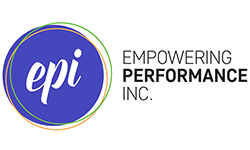A Note from Michelle: Lead Change Well
We all have to put our money where our mouths are at some point. For us at EPI that means we’re taking our own advice: investing time and energy in changes today that will make our lives better tomorrow. In this case, new collaboration and workflow systems. It’s been a worthwhile process, but certainly not a painless one.
As author John C. Maxwell says, however, “Change is inevitable. Growth is optional.” And growth isn’t particularly pretty. It happens in fits and starts . . . and you always go through an awkward stage. We’re in that awkward phase right now.
As we adapt to doing things differently, we’re straddling the old and the new, and feeling a tad stressed at the end of the day. All pretty normal stuff for a change initiative. But we do have a little something up our sleeve that makes it easier: Lead Change Well.
One of the advantages of developing ways to help our clients up their game – with change management or anything else – is that our team benefits from the continual learning. It’s never that we think we know better; it’s that we believe we can all get better.
So, if you want your team to become more resilient in the face of transition, we have some suggestions. And we know they work because we’ve been there. We’re there now, in fact.
Prepare for Change. Nobody reacts well when change is sprung on them without warning.
Be transparent about the upcoming changes and business reasons behind them.
Address concerns and perceptions with patience and empathy; put yourself in your team members' shoes.
Resistance is one cause of change efforts failing, so increase your understanding of the reasons people resist change.
Maintain communication throughout.
Execute Change. Don’t prolong the inevitable by being wishy-washy or sending mixed messages.
Model the behaviors you want to see from your team.
Understand the stages of commitment to change.
Expect varying reactions, including resistance, but move the initiative forward deliberately and consistently, eliminating obstacles.
Sustain Change. Consistency is key to developing the new normal.
Support the changes with ongoing feedback
Reward innovation and growth.
Create conditions that anchor the changes as the new “way things are done.”
Everyone at any level in an organization has the opportunity to make a positive difference regarding change. But you can make the adjustment less painful for your team by preparing, executing, and sustaining change with intent.
And we can make it less painful for you! Need to implement a major change in your organization? Want to coach an individual through change? Hoping to work through your own resistance to a change? Let us help you Lead Change Well.
Michelle Kelly, CEO (Chief Enjoyment Officer)

